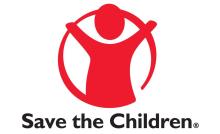Resource information
A Participatory Action Research Project
of Save the Children(UK)...
1. Introduction;
2. Background;
2.1. Population;
2.2. Geography;
2.3. Political Dimensions;
2.4. Economic Dimensions;
2.5. Social Dimensions;
2.6. Vulnerability of Children and Youth;
3. Research Design;
3.1. Project Objectives;
3.2. Ethical Considerations;
3.3. Research Team;
3.4. Research Sites and Participants;
3.5. Data Collection Tools;
3.6. Data Analysis Strategy;
3.7. Obstacles and Limitations;
4. Preliminary Research Findings;
4.1. The Migrants;
4.2. Reasons for migrating;
4.3. Channels of Migration;
4.4. Occupations;
4.5. Working and Living Conditions;
4.6. Health;
4.7. Education;
4.8. Drugs;
4.9. Child Labour;
4.10. Trafficking of Persons;
4.11. Vulnerabilities of Children;
4.12. Return and Reintegration;
4.13. Community Responses;
5. Conclusion and Recommendations...
Recommendations to empower migrant children and youth in the Mekong sub-region...
"This report provides an awareness of the realities and perspectives among migrant children, youth and their communities, as a means of building respect and partnerships to address their vulnerabilities to exploitation and abusive environments. The needs and concerns of migrants along the borders of China, Myanmar and Thailand are highlighted and recommendations to address these are made.
The main findings of the participatory action research include:
* those most impacted by migration are the peoples along the mountainous border areas between China, Myanmar and Thailand, who represent a variety of ethnic groups
* both the countries of origin and countries of destination find that those migrating are largely young people and often include children
* there is little awareness as to young migrants' concerns and needs, with extremely few interventions undertaken to reach out to them
* the majority of the cross-border migrants were young, came from rural areas and had little or no formal education
* the decision to migrate is complex and usually involves numerous overlapping factors
* migrants travelled a number of routes that changed frequently according to their political and economic situations. The vast majority are identified as illegal immigrants
* generally, migrants leave their homes not knowing for certain what kind of job they will actually find abroad. The actual jobs available to migrants were very gender specific
* though the living and working conditions of cross-border migrants vary according to the place, job and employer, nearly all the participants noted their vulnerability to exploitation and abuse without protection or redress
* for all illnesses, most of the participants explained that it was difficult to access public health services due to distance, cost and/or their illegal status
* along all the borders, most of the children did not attend school and among those who did only a very few had finished primary level education
* drug production, trafficking and addiction were critical issues identified by the communities at all of the research sites along the borders
* child labour was found in all three countries
* trafficking of persons, predominantly children and youth, was common at all the study sites
* orphaned children along the border areas were found to be the most vulnerable
* Migrants frequently considered their options and opportunities to return home
Based on the project’s findings, recommendations are made at the conclusion of this report to address the critical issues faced by migrant children and youth along the borders. These recommendations include: methods of working with migrant youth, effective interventions, strategies for advocacy, identification of vulnerable populations and critical issues requiring further research.
The following interventions were identified as most effective in empowering migrant children and youth in the Mekong sub-region: life skills training and literacy education, strengthening protection efforts, securing channels for safe return and providing support for reintegration to home countries. These efforts need to be initiated in tandem with advocacy efforts to influence policies and practices that will better protect and serve migrant children and youth.



